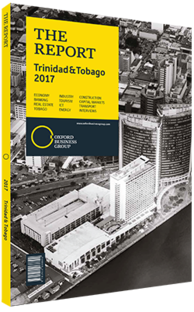Trinidad and Tobago mobile phone customers will soon choose between three 4G providers
In the not too distant future, Trinidad and Tobago’s citizens could have a choice of three 4G LTE mobile phone providers, following a change of tack from the Telecoms Authority of T&T (TATT) brought about by the appointment of a new CEO, John Prince, in December 2016. While the identity of the country’s future third mobile provider, which is long assumed to be Cable & Wireless Communications (CWC), and the date of launch have yet to be confirmed, it is expected by the end of 2017.
The announcement will be accompanied by the awarding of 700-MHz spectrum to all three providers rather than the two incumbents. “TATT is committed to ensuring equitable distribution of spectrum among all mobile operators to ensure each can offer 4G LTE services,” Prince told OBG. “Within the 700-MHz spectrum, 45 MHz is available, and so each provider will receive an allocation of up to 15 MHz.”
However, established operators have expressed opposition to the plan.“It is our position that T&T’s mobile market is already saturated, meaning that there is neither a demand nor a need for a third player,” Ronald Walcott, CEO of Telecommunications Services of T&T (TSTT), told OBG. “Also, with only two 4G LTE bands up for grabs, a third player would be left at a disadvantage, and so there is something fundamentally wrong with this spectrum plan.”
Three Amigoes
The 4G LTE technology represents the fourth, and latest, generation of technology for data access over mobile networks, and the LTE technology is widely regarded as the fastest and most consistent variety of 4G available globally. TSTT has operated 4G LTE domestic broadband for a number of years and the firm, along with its main rival Digicel has operated the alternative 4G HSPA+ technology since 2012. However, LTE works best on the 700-MHz spectrum, which allows for better indoor penetration and outdoor coverages, and less interference. However, until Prince’s appointment it appeared that one of the two mobile providers was set to miss out. In 2014 TATT launched a request for proposals for a new third mobile operator and simultaneously invited the new applicants and legacy players to bid for two blocks of 700-MHz spectrum. “The 700-MHz spectrum is gold for mobile LTE,” Miguel Garcia, COO of TSTT, told OBG. “While LTE can be farmed from other spectra, doing so puts certain limitations on performance.”
While it looked likely that TSTT would miss out on the 700-MHz allocation, the firm took steps to improve its services, announcing in December 2016 that it had become the first company to introduce 4G LTE mobile services, having reallocated a portion of its existing 1900-MHz bandwidth. The service was made available in the Port of Spain, San Fernando and Scarborough areas in the first phase of the project, but full coverage would require a 700-MHz licence. “It is our expectation that we will be able to continue to roll out our 4G LTE mobile service in the 700-MHz band, which is the most standard spectrum for the LTE deployment because of its propagating characteristics, which include the ability to have the type of geographic coverage that we want,” Walcott told media in December 2016.
Renewed Impetus
Although the continued delay of the confirmation and entry timeline for the third mobile provider continues to add an element of uncertainty to the T&T mobile telephony market, TATT’s decision to revisit its previous decision on releasing 700-MHz spectrum is a welcome one.
By guaranteeing each provider 700-MHz bandwidth, the authorities have not only avoided tolling a death knoll for one company but have also allowed operators to tool up and invest in infrastructure. Prince estimates that the awarding of the spectrum will generate revenues of up to $23m over 10 years for the government of T&T. Perhaps most importantly, however, T&T will retain its reputation for being at the forefront of telecoms technology adoption.
You have reached the limit of premium articles you can view for free.
Choose from the options below to purchase print or digital editions of our Reports. You can also purchase a website subscription giving you unlimited access to all of our Reports online for 12 months.
If you have already purchased this Report or have a website subscription, please login to continue.

